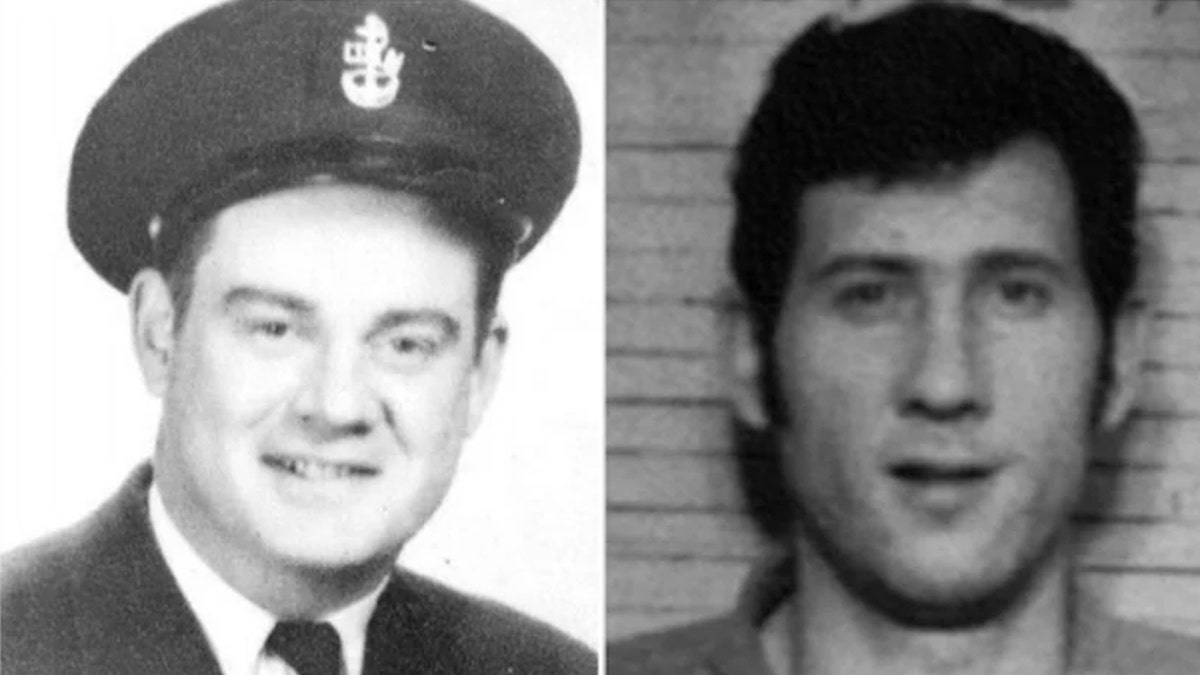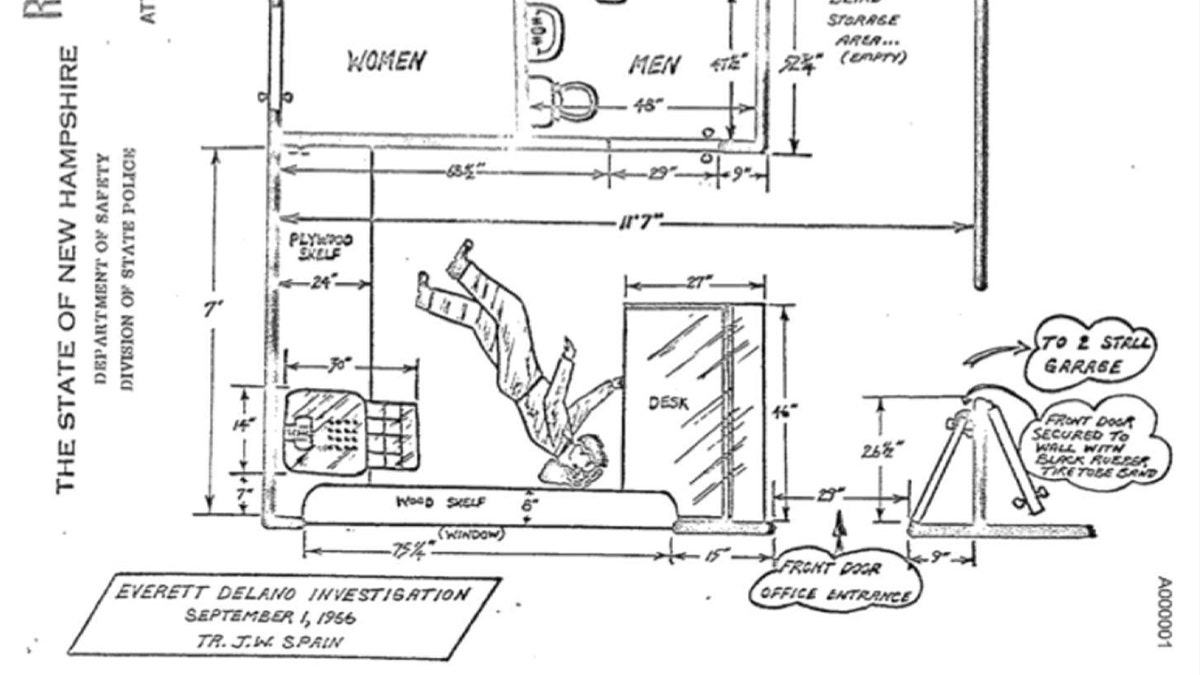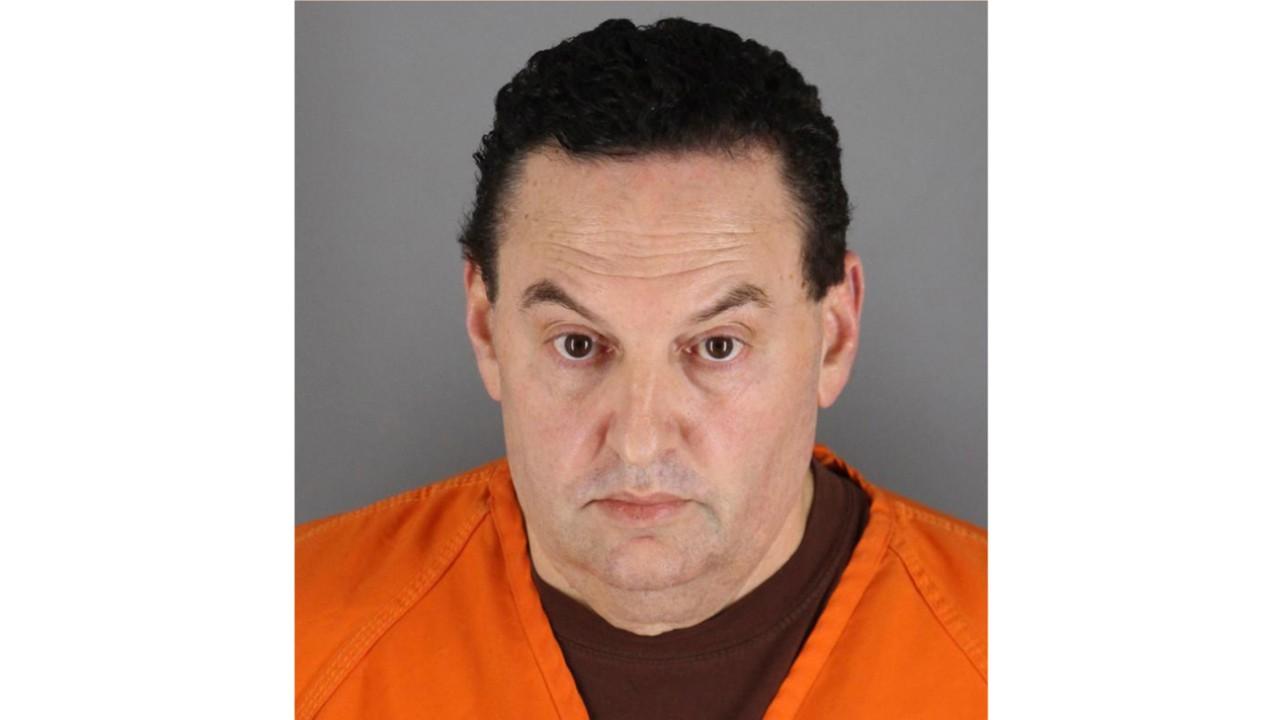
Everett Delano, left, was killed on Sept. 1, 1966 and gone unsolved for over 50 years. Officials revealed Wednesday that Thomas Cass, right, is the suspected killer. (New Hampshire Department of Justice)
Over 50 years after a Navy veteran and father of three died after being shot at an auto repair shop, New Hampshire's Cold Case Unit announced Wednesday it solved its oldest crime and the main suspect killed himself years later.
Everett Delano, 49, was shot three times in the head while working at Sanborn's Garage in Andover, N.H on Sept. 1, 1966 before his assailant got away with no more than $100. The retired Naval veteran later died at the hospital.
"The thief/murderer likely obtained between $75-$100 from the register," the N.H. Department of Justice said in its report. "However, the cash box hidden under the counter was found intact with approximately $500 in it. In the cash register drawer the police also found a hair that was seized for forensic testing."
Delano’s watch was also recovered from the scene and had been struck by a bullet, stopping at 9:35 a.m. that day.

Thomas Cass, right, is the suspected killer of Everett Delano at Sanborn Auto Body in Andover, N.H. on Sept. 1, 1966. (New Hampshire Department of Justice)
Fingerprints found on a sink at the scene were collected by investigators and sent off to the FBI. A cigarette butt that had been extinguished on the floor was also collected as evidence.
MURDERED MEMPHIS MOTHER MAY BE SUBJECT IN SERIAL KILLER'S SKETCHES, FAMILY CLAIMS
With no leads by the end of 1966, the case went cold until the fall of 2013, when the cold case unit reopened the case after they were contacted by a member of Delano's family.
Investigators then discovered that fingerprints from the scene hadn't been entered into an FBI database, which wasn't fully operational in 1966. New Hampshire only began using the Automated Fingerprint Identification System in 1998, officials said.
"When the laboratory began using the AFIS system, they did not enter fingerprints collected in investigations prior to 1998, unless specifically requested by law enforcement," investigators said.

An illustration of the crime scene at Sanborn Auto Body in Andover, N.H. on Sept. 1, 1966. (New Hampshire Attorney General)
When the prints were submitted, police were then led to led to Thomas Cass, of Orleans, Vermont. During an interview in Fall 2013 with Cass, he admitted to police in 1967 he committed a robbery with two other men at a gas station in Springfield, Mass. using a sawed-off shotgun and was arrested.
"When asked if he had any knowledge of the homicide in Andover, New Hampshire in 1966, he denied having any knowledge of this and claimed he did not know where Andover, New Hampshire was located," investigators said.
SUSPECT IS ARRESTED FOR MURDER OF 11-YEAR-OLD GIRL WHO WAS ABDUCTED AND LEFT IN DITCH 45 YEARS AGO
Cass later voluntarily provided a sample of DNA in November 2013, but refused to give a polygraph test. In February 2014, investigators executed a search warrant by Vermont State Police at Cass' home in an effort to locate the weapon used in the 1966 killing.
No weapons were found on the property, but a judge found that there was " probable cause to believe that evidence of Mr. Delano’s murder" existed at the residence.
Four days later, police received a call that Cass died of a self-inflicted gunshot wound at his home at the age of 67.
Cass’s live-in companion, Jane Spainol, toll 911 that Cass "believed that the police were coming to arrest him in relation to a cold case investigation."
"However, Mr. Cass had also once told her in the past, 'you never talk about something that has no statute of limitations.' She also told investigators that in the past Mr. Cass had made comments about never going back to prison," investigators noted. "He told her that he would not die in a square box."
CLICK HERE FOR THE FOX NEWS APP
In a legal analysis of the case, the summary said that Cass' fingerprints and the suicide amounted to admissions of guilt.
"Over the years, he had made it clear to those closest to him that he would never go back to prison," the summary said. "It is a fair inference that he killed himself to avoid going back to prison."

